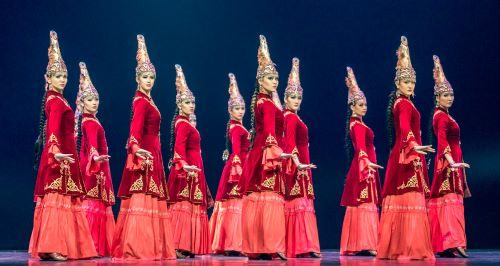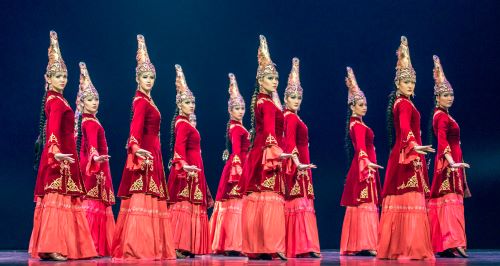 United Kingdom Astana Ballet: Linbury Theatre, Royal Opera House, London, 12.9.2019. (JO’D)
United Kingdom Astana Ballet: Linbury Theatre, Royal Opera House, London, 12.9.2019. (JO’D)

Production:
Music – recordings of Edith Piaf, Charles Dumont, Jaques Brel, Fazil Say, Lalo Shifrin, Astor Piazzolla, Carlos Gardel, Sayo Kosugi, Turan, Chemirani, E. Khusainov, Dina Nurpeisova, A. Alpekuly
Choreography – Mukaram Avakhri, Tati Aigul, Ricardo Amarante
Dancers: Ainur Abilgazina, Kazbek Akhmediyarov, Anel Baltenova, Farkhad Burlyev, David Jonathan, Darina Kairasheva, Riza Kanatkyzy, Ilya Manayenkov, Aizhan Mukatova, Dilara Shomayeva, Sundet Sultanov, Tatyana Ten, Amir Zhexenbek and other dancers of Astana Ballet
Photographs in the programme for this first UK tour by Kazakhstan’s Astana Ballet show the gleaming expanses of the Astana Ballet Theatre which serves as the company’s home. The Linbury Theatre, by contrast, is small and cramped. It gave Astana Ballet the cachet of performing at the Royal Opera House, but the larger spaces of other London venues such as Sadler’s Wells or the Peacock Theatre might be more appropriate for much of its choreography.
The four-work bill ranges from contemporary ballet to folkdance, from the intimate to the spectacular. Pieces by guest choreographer, Ricardo Amarante (a graduate of the English National Ballet School) show a very different aesthetic to those by the company’s ‘Chief Choreographer’, Mukaram Avakhri, and ‘Choreographer of the Highest Category’, Tati Aigul. What is always in evidence, though, is the dancers’ precision and clarity of gesture. These may come from the training many of them received at the Almaty Choreographic School.
After a false start (curtains opening on a pair of dancers then closing again) the evening began with Ricardo Amarante’s Love Fear Loss (2016). Of the three duets that make up this ballet, Fear was the most interesting: for the music (Charles Dumont), for the choreography, for the expressive face of the female dancer (Ainur Abilgazina), for the way the male dancer (Ilya Manayenkov) positioned his fingers so that they gave a particular finish to everything he did.
Based on the play by Oscar Wilde, with music by Fazil Say, Mukaram Avakhri’s Salomé (2018) juxtaposes the drama of Herod, Herodias, Salomé and John the Baptist with dancers arranged in phalanxes around the stage. The central roles are performed with great conviction by Kazbek Akhmediyarov, Riza Kanatkyzy, Aizhan Mukatova and Farkhad Burlyev, the groups of swirling dancers skilfully deployed; but the ballet often seems overblown and laboured; it ends up working against itself.
The Heritage of the Great Steppe, ‘choreographic miniatures…with a strong national flavour’ by Mukaram Avakhri, Tati Aigul and a choreographer listed as ‘A. Tsoy’, replaces Wildean decadence with women in a stage version of traditional costume. Taking tiny footsteps underneath their floor-length flounces, the women undulate their arms to music described in the programme as ‘ethno-folk’ and give enchanting smiles. Folkdance performed by classically trained dancers, outside of a nineteenth-century ballet: something not often seen at the Royal Opera House. Subsequent miniatures with the titles ‘Joy’ and ‘Charming Tenderness’ are performed by smiling female soloists. Elaborately costumed warriors and archers dance an energetic ‘Scythian Mural’. There is also a contemporary ballet section in which both male and female dancers wear skirts of voluminous black.
The final work, A Fuego Lento (2016) by Ricardo Amarante, returns to more familiar territory for a ballet audience in London in 2019: a stage stripped to a bare back wall, a row of lights at floor level pointing at the audience, dancers in tight-fitting black and grey. Taking the rhythms of the tango as a basis, with a nod to William Forsythe and Alexei Ratmansky in the choreography, it is a chance for the dancers to display their stamina and technique. Not that either of those had ever been in doubt. A finale and coda, applause that turned to appreciative slow handclapping: after its false start the evening came to a smooth and successful close.
John O’Dwyer
